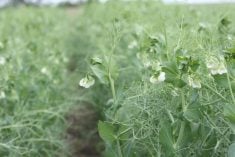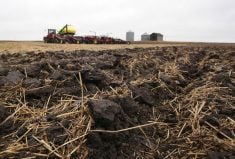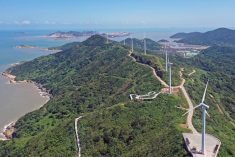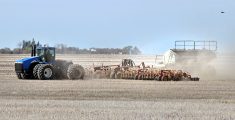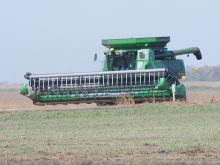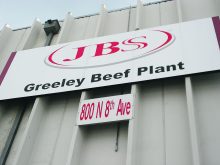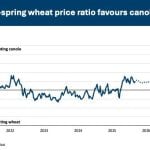Measuring nitrous oxide emitted from soil is a tricky business.
It’s complicated because the amount emitted from farmland depends on several factors, such as soil temperature, moisture level, microbial activity, aeration and the organic matter content in the soil.
If agricultural soil is soaked in June, for example, emissions could be two or three times higher than a June with dry weather.
On top of that, the emissions in one part of a field could be different from another patch within a field.
Read Also
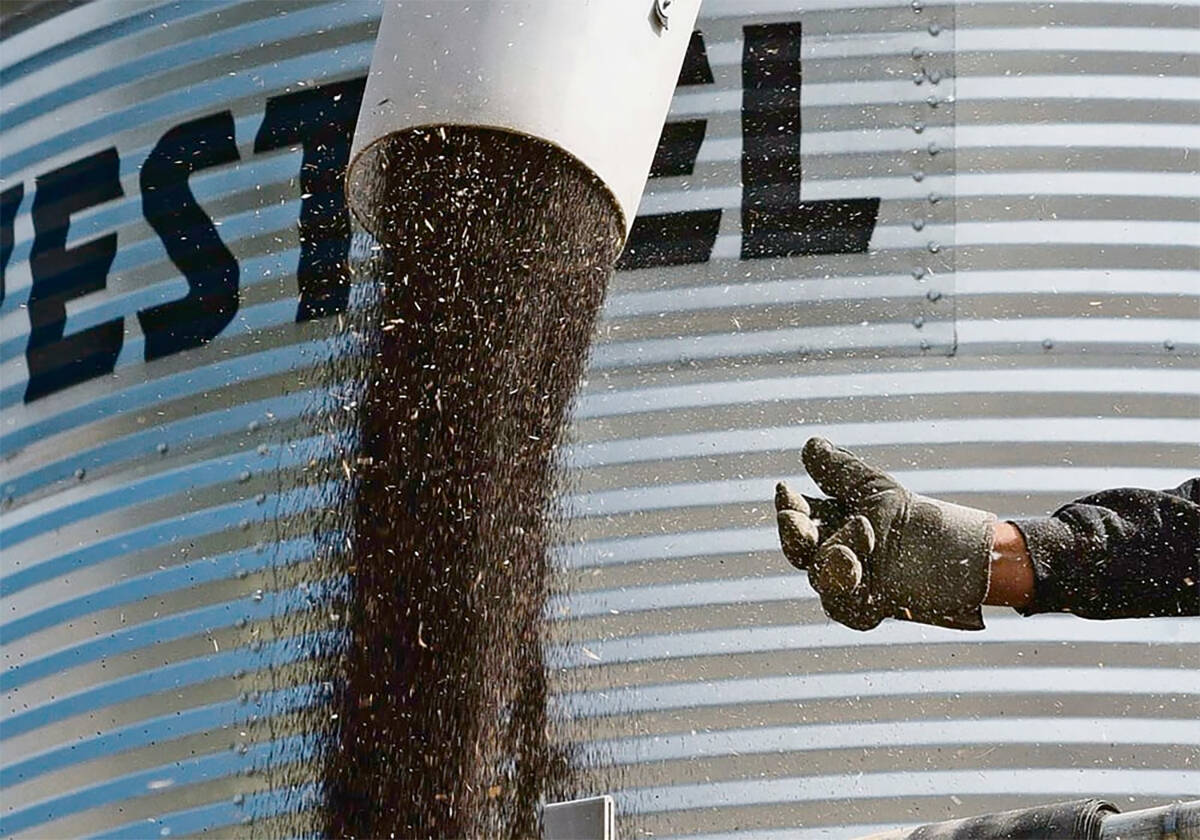
Farmers urged to be grain-safe this fall
Working around grain bins comes with risk, from farmers falling to drowning in grain: Experts have five tips to help avoid grain-related accidents this harvest.
“Nitrous oxide emissions are notoriously variable, in space and time,” said Richard Farrell, a University of Saskatchewan scientist who studies greenhouse gas emissions from farmland.
“In areas of the field where you have higher organic matter content and where water tends to collect, you’ll get higher emissions.”
Farrell and dozens of other researchers want to accurately measure nitrous oxide emissions from farmland because N2O is a potent greenhouse gas.
One kilogram of nitrous oxide released into the atmosphere is the equivalent of 300 kg of carbon dioxide. Plus, N2O is known to deplete the ozone layer in the atmosphere.
Around the globe, a large chunk of the greenhouse gas emissions from agriculture is connected to nitrous oxide emissions from soil.
In Canada, the application of nitrogen fertilizer and the related N2O emissions produce about 12.8 million tonnes of greenhouse gases (in carbon dioxide equivalents). That’s about 20 percent of the 60 million tonnes of GHG emissions from Canadian farms.
The federal government is asking producers to reduce nitrous oxide emissions from fertilizer by 30 percent, as part of the broader effort to cut Canada’s emissions 45 percent by 2030.
But many producers are skeptical about the target, especially the lack of data on N2O emissions from cropland.
“(There is) a need for reliable data to accurately measure fertilizer emissions and progress,” said Troy Sherman, director of government relations with the Canola Council of Canada. “There are some major gaps in this space…. There has to be a dedicated effort to get that reliable data.”
Scientists like Farrell are trying to fill the void with accurate data. In an interview with The Western Producer in April, he said there are two methods to measure nitrous oxide emissions from cropland.
The first involves putting chambers, or canisters, in the soil to collect released gases.
“We go out into the field and you put a chamber base into the field,” Farrell said.
“They (the chambers) are usually made out of PVC, or steel or aluminum. And the base gets installed into the soil…. You have a chamber lid that sits on the base and seals to the base. Once it’s sealed, you take measurements at certain time intervals.”
The chambers are fairly small and are shaped like a cylinder or a cube.
Some are 20 centimetres wide and about 10 cm high. Others are slightly larger.
To collect a sample, scientists stick a syringe into an opening of the chamber and pull out a small amount of gas and then repeat that process several times over an hour or less.
“Take measurements at zero, 10, 20 and 30 minutes,” as an example, Farrell said.
But estimating the amount of nitrous oxide released from an entire field is more complicated than one chamber and one set of measurements.
“It’s (different from) carbon measurements,” Farrell said. “Say you go from tillage to no-till. Over time, you’ll see that carbon build up and you can track what’s going on…. With nitrous oxide, because it’s so variable and so dependent on climate… and the weather, how much is coming off in any one year is going to be variable.”
At a research site in Clavet, Sask., Farrell and his colleagues are using 35 chambers to measure nitrous oxide emissions from farmland.
“We use all of that data and use some modeling to upscale that data, to what would be (the) emissions across the whole field.”
If scientists can collect enough chamber data from a variety of landscapes and soil conditions and different fertilizer practices across Canada, they can feed the data into a computer model. Then, if a farmer changes practices, scientists could estimate the changes in N2O emissions.
“So, this is what we expect to occur. If it’s a dry year, we’re getting one value. If it’s a wet year, we’re getting another value…. (And) use those models to say: this is the kind of reduction that we’re going to (get).”
The second approach to measure nitrous oxide from farmland is simpler, but it requires high tech equipment with complex names like quantum cascade lasers.
The lasers take thousands of measurements to determine the nitrous oxide emissions from a field.
“You put towers out in the landscape. And it brings (in) gas samples from the atmosphere, at two different heights, into an analyzer that’s in the field,” Farrell said. “And it takes measurements around the clock.
Louis Schipper from the University of Waikato in New Zealand said the lasers collect nitrous oxide emissions from a much larger area than chambers.
“It’s a bit like looking at an impressionist painting — if you zoom in on a single brush stroke you don’t get much of an idea what’s going on but using the laser, we’re able to step back and see the bigger picture,” he told stuff.co.nz.
“There’s a pipe that draws air into the laser… mounted on a small tower and is about two metres off the ground…. For every metre above the ground that the air is taken from, the laser integrates measurements from over a 100-metre radius. That means if you place the air pipe two metres up, you’re essentially measuring nitrous oxide over a 200-metre radius.”
The high-tech approach does have limitations.
The landscape must be relatively flat and it’s expensive.
Compared to sensors that measure carbon, the cost of the laser technology is massive.
“We have a couple of analyzers that can do this in the field, but they cost $75,000 a piece,” Farrell said. “For carbon dioxide, there are sensors using infrared technology (that) you can bury in the soil and take measurements. They only cost a couple of hundred dollars.”
The cost may eventually drop, making it more feasible, but that could be a decade from now, or longer.
“Until we can find some way to bring these (costs) down, I just don’t see it,” Farrell said.
For now, Farrell is using both methods to understand nitrous oxide emissions from Canadian farmland.
“Use the chambers to understand the mechanisms. Why things are happening, when they are happening,” he said. “And use the micro-meteorological (laser technology) to get a nice, integrated value for a field.”




